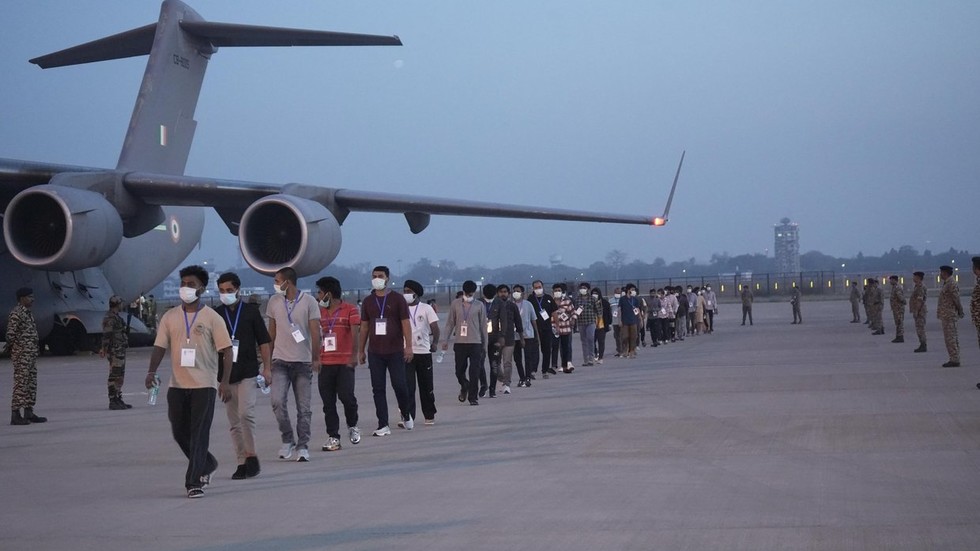Unveiling the Dark Side: India’s Rescue of Victims from Myanmar’s Cyber Slavery
In a remarkable operation that underscores the urgent need for global vigilance and cooperation, India has successfully liberated hundreds of individuals caught in the sinister web of cyber slavery emanating from Myanmar. This operation not only highlights the dark underbelly of modern technology but also emphasizes the growing threat of online exploitation in our interconnected world. With the rise of digital platforms, the potential for abuse has multiplied, making it imperative for nations to act swiftly and decisively against such heinous crimes.
The Context of Cyber Slavery
Cyber slavery refers to the exploitation of individuals through digital means, often involving coercion, fraud, and manipulation. Victims are frequently lured under false pretenses, leading to severe psychological and physical trauma. The prevalence of this issue is alarming, particularly in regions where governance is weak, and economic opportunities are scarce. Myanmar has seen a rise in such criminal activities, driven by a combination of factors including political instability, poverty, and the proliferation of digital communication technologies.
The Operation: A Beacon of Hope
In a coordinated effort involving Indian intelligence agencies and law enforcement, the operation to rescue victims from Myanmar’s cyber slavery was executed with precision. Reports indicate that the operation began with intelligence gathering, which revealed the locations and conditions of the victims. Authorities worked tirelessly, liaising with regional governments and NGOs to facilitate the safe extraction of these individuals.
The operation successfully liberated hundreds of victims, many of whom were subjected to inhumane conditions. Survivors reported being forced to engage in fraudulent activities, often trapped in a cycle of debt and intimidation. The psychological toll on these individuals was profound, with many exhibiting signs of trauma and distress.
The Role of Technology in Exploitation
The dark side of the digital age is that while technology has the power to connect and empower, it can also facilitate exploitation. Cybercriminals exploit social media, dating apps, and online job platforms to lure unsuspecting individuals into their traps. The anonymity provided by the Internet allows these perpetrators to operate with relative impunity.
Some common methods used by traffickers include:
- Fake Job Offers: Many victims are promised lucrative job opportunities abroad, only to find themselves in exploitative conditions.
- Online Grooming: Victims are often groomed through social media platforms, building trust before leading them into exploitative situations.
- Debt Bondage: Once trapped, victims may be coerced into working off fabricated debts, with little hope of escape.
Global Response and Responsibility
The rescue operation in India is a critical reminder of the collective responsibility nations have in combating cyber slavery. International cooperation is essential to dismantle these networks and provide support to victims. Various organizations, including the United Nations and numerous NGOs, have begun to address the need for stronger regulations and frameworks to combat online exploitation.
Here are a few actions that can be taken globally:
- Strengthen Law Enforcement: Countries need to enhance their law enforcement capabilities to investigate and prosecute cyber crimes effectively.
- Public Awareness Campaigns: Raising awareness about the signs of cyber slavery can help individuals recognize potential threats.
- Support for Victims: Providing psychological and legal support to victims is essential for their recovery and reintegration into society.
The Importance of Community Engagement
Communities play a vital role in the prevention of cyber slavery. Grassroots movements can create a more informed populace that is aware of the dangers and signs of exploitation. Community organizations can offer resources, support networks, and educational programs that empower individuals to protect themselves and others.
Moreover, fostering a culture of vigilance and empathy can help dismantle the stigma surrounding victims of cyber slavery. Those who have experienced exploitation often face societal rejection, which can hinder their recovery. By creating supportive environments, communities can aid in the healing process and encourage victims to come forward.
The Path Forward: Building Resilience
As India’s operation reveals, there is hope in the fight against cyber slavery. However, the path forward requires ongoing commitment and collaboration among governments, organizations, and communities. Here are some strategies to build resilience against such exploitation:
- Education: Implement educational programs that inform individuals about the risks of online interactions and the tactics used by traffickers.
- Policy Advocacy: Advocate for policies that protect vulnerable populations and hold perpetrators accountable.
- Use of Technology for Good: Leverage technology to create platforms that connect victims with support services and resources.
Conclusion: A Call to Action
The rescue of victims from Myanmar’s cyber slavery is a powerful reminder of the urgent need for action against online exploitation. While the operation signifies a victory, it also highlights the ongoing battle against cybercrime. As individuals, communities, and nations, we must unite to prevent such atrocities from occurring in the future.
By raising awareness, strengthening legal frameworks, and supporting survivors, we can work towards a world where individuals are no longer subjected to the horrors of cyber slavery. Let us transform this dark revelation into a collective movement for change, ensuring that every person’s dignity and freedom are upheld in the digital age.
See more CNN Headline


